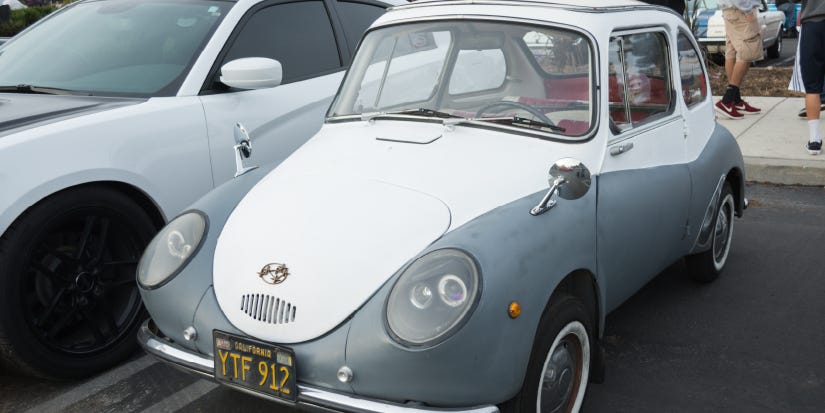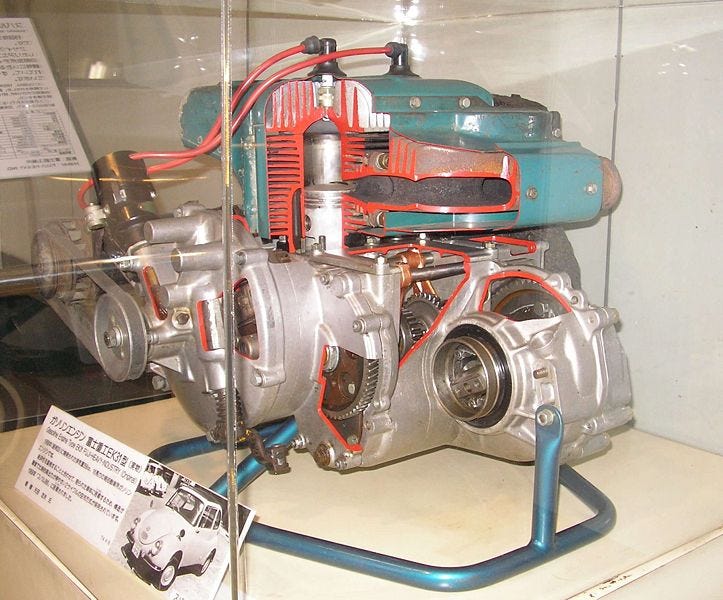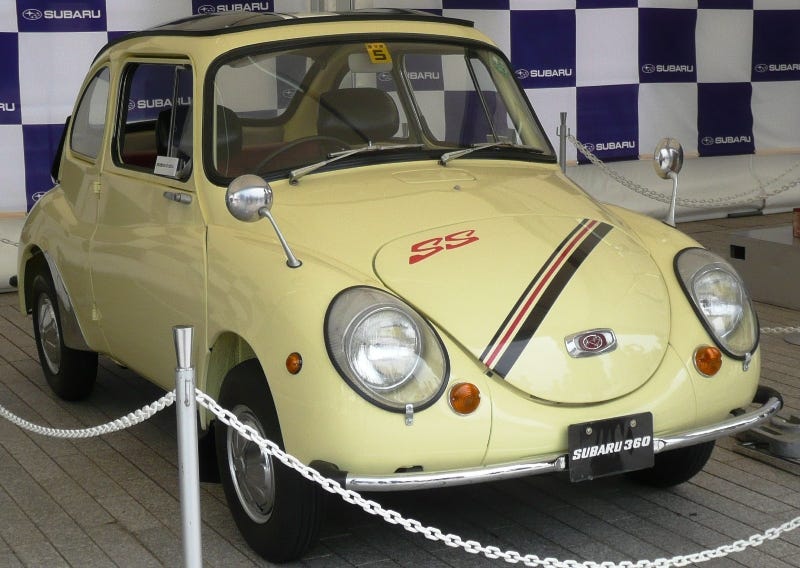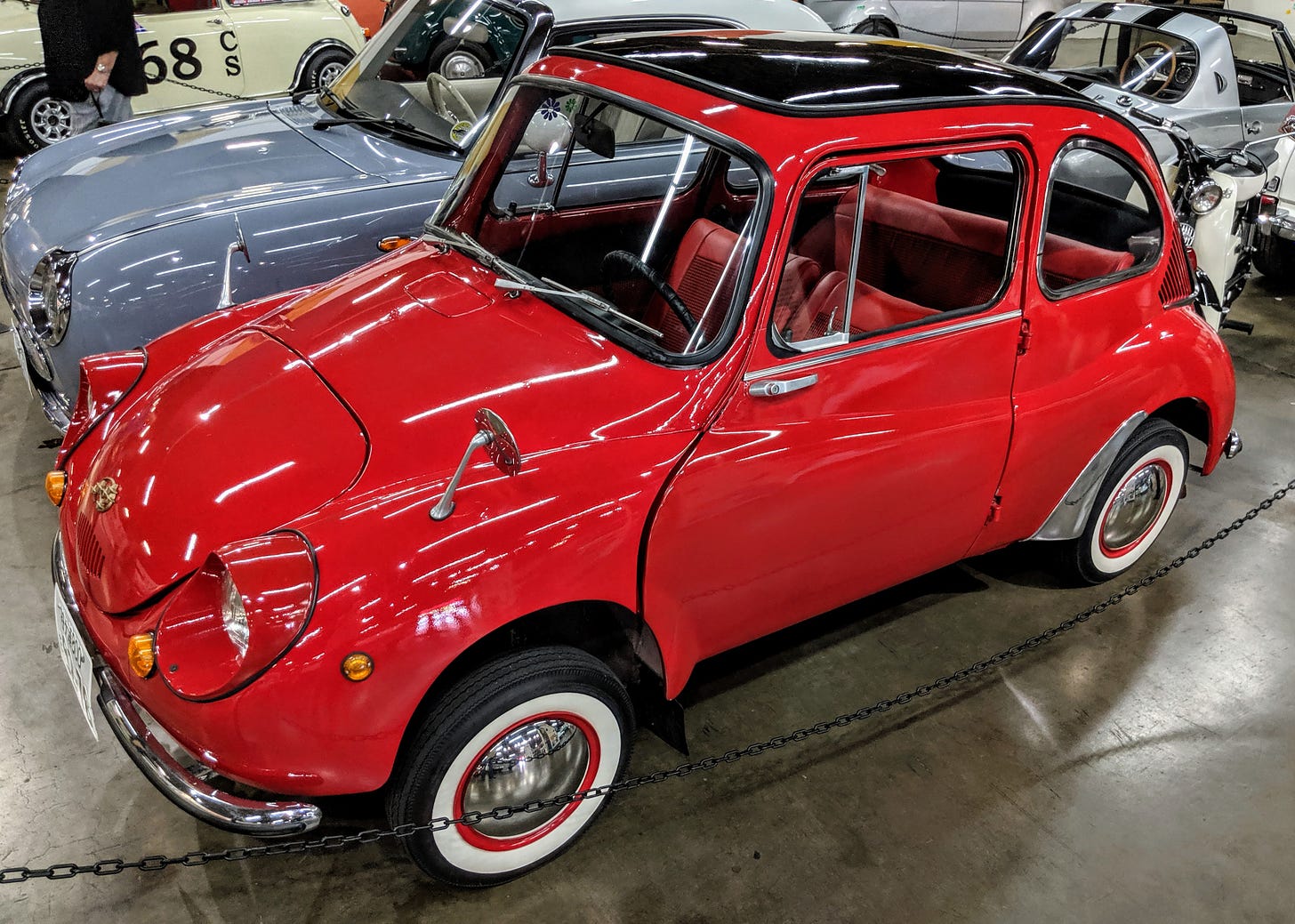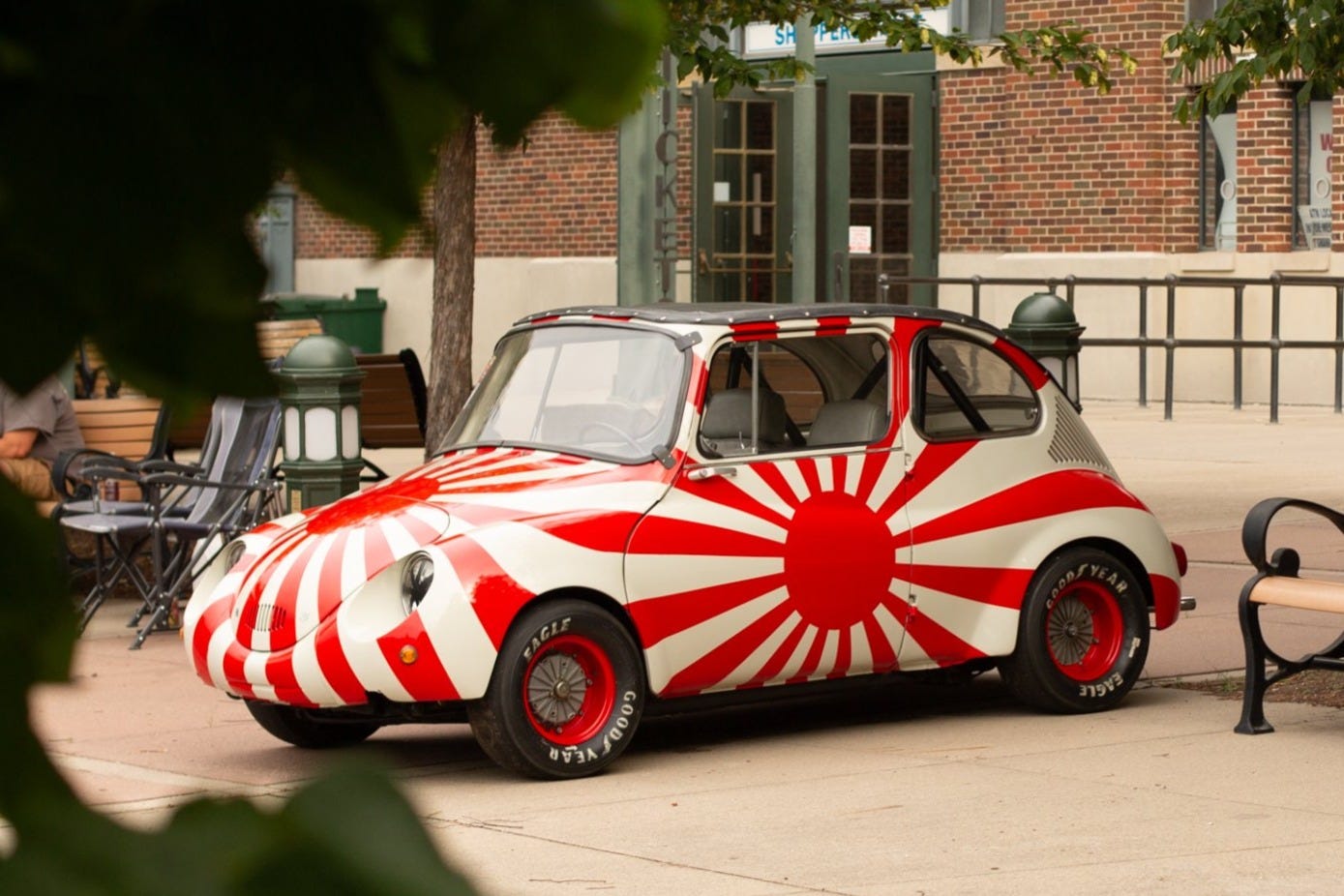The 1966 Subaru 360 was also known as the Japanese Beetle
This time in history marked the beginning of Japan’s automotive revolution, and the Subaru 360 played a crucial role in this transformation.
The 1966 Subaru 360 stands as a notable entry in the history of compact cars. Developed by Subaru, a subsidiary of Fuji Heavy Industries (now known as Subaru Corporation), the 360 was introduced to the Japanese market in 1958.
It arrived during a time when Japan's government was encouraging the production of affordable and fuel-efficient vehicles to meet the needs of post-war Japan’s growing middle class. This era marked the beginning of Japan’s automotive revolution, and the Subaru 360 played a crucial role in this transformation.
By 1966, the car had already made a name for itself, both in Japan and, surprisingly, in the United States.
Unique Features of the 1966 Subaru 360: A Tiny Powerhouse
The 1966 Subaru 360 was designed as a kei car, a category of small cars and microcars in Japan that benefit from tax and insurance benefits due to their size and engine capacity. Its dimensions—at just 118 inches long and weighing around 900 pounds—made it one of the smallest cars on the road. Despite its size, the Subaru 360 could comfortably fit four passengers, making it a practical choice for urban driving.
Under the hood, the 1966 Subaru 360 featured a 356 cc, air-cooled, two-stroke, two-cylinder engine. This engine produced 16 horsepower, allowing the car to reach a top speed of about 60 miles per hour. While this may not seem like much by modern standards, the engine’s simplicity and efficiency made it ideal for its intended market.
The rear-engine, rear-wheel-drive configuration contributed to the car’s lightweight design and compact profile, further enhancing its agility in tight urban environments.
The two-stroke engine design also meant that the 1966 Subaru 360 required oil to be mixed directly with gasoline for lubrication, a standard feature of two-stroke engines of that era. This contributed to its low cost of maintenance, another key selling point that attracted budget-conscious consumers.
Marketing the Subaru 360: A Bold Entry into the U.S. Market
In 1968, the Subaru 360 made its way to the United States, introduced by Malcolm Bricklin, a visionary entrepreneur who saw potential in bringing this economical car to American consumers. The marketing approach for the Subaru 360 was notably bold and unconventional, especially for the time. Subaru emphasized the affordability and economy of the vehicle, positioning it as a budget-friendly alternative to larger, gas-guzzling American cars.
One of the most memorable marketing campaigns for the Subaru 360 in the U.S. was the "cheap and ugly" slogan. This slogan was self-deprecating and unusual, but it caught the attention of American consumers. Subaru marketed the car as a no-frills, practical vehicle that got the job done. The advertisements often highlighted its low price point—it was one of the cheapest cars in the United States at the time, priced at around $1,297.
Subaru aimed the 360 at urban dwellers who needed a small, easy-to-park vehicle for city driving. The fuel efficiency of the Subaru 360, boasting up to 66 miles per gallon, was a major selling point during a time when gas prices were a concern for many drivers. Despite its low horsepower, the Subaru 360 managed to carve out a niche market in the U.S. due to its unique combination of affordability, size, and economy.
Pop Culture Presence: The Legacy of the 1966 Subaru 360
While the 1966 Subaru 360 did not achieve mainstream success in the United States, it has gained a cult following among classic car enthusiasts and microcar collectors. The quirky design and diminutive size have made it a conversation piece at car shows and automotive events. Enthusiasts appreciate the 360 for its distinctive character and its place in automotive history as Subaru’s first major export to the U.S. market.
The 1966 Subaru 360 has made occasional appearances in films and television, often being portrayed as an adorable yet underpowered car that represents the charm of early Japanese imports. Its unique look, with round headlamps and a curved, beetle-like body, makes it instantly recognizable on screen. Though not a staple in popular culture like some other vintage cars, it remains a symbol of Japan's post-war automotive ingenuity.
Over the years, the Subaru 360 has attracted some celebrity attention, mostly from car collectors and those with a taste for the eccentric. While it might not have the same star-studded owner list as a luxury sports car, the Subaru 360's charm has caught the eye of a few well-known figures in the automotive community, including Jay Leno, who has discussed the car’s unique place in automotive history on his show, Jay Leno's Garage. His admiration for the Subaru 360 highlights the vehicle’s enduring appeal among those who appreciate classic, rare, and quirky automobiles.
The success of the 1966 Subaru 360 laid the groundwork for Subaru's future in the global automotive market. It demonstrated that Subaru could create compact, reliable vehicles that met the needs of a wide range of consumers. The lessons learned from the development and marketing of the Subaru 360 directly influenced the creation of future Subaru models, such as the Subaru 1000 and later the Subaru Legacy and Outback models, which became hits worldwide.
Often referred to as the "Ladybug" in Japan due to its shape, the Subaru 360 drew comparisons to the Volkswagen Beetle. Both cars were designed to provide an affordable mode of transportation for the masses, and both became symbols of their respective automotive revolutions. However, while the Beetle achieved global icon status, the Subaru 360 remained a niche product in many markets outside Japan.
The 1966 Subaru 360 has become a sought-after collectible vehicle, especially in the United States, where its novelty and rarity make it a prized possession for vintage car collectors. Restored models can fetch a higher price than one might expect for such a small car, reflecting its historical significance and the dedicated community that surrounds it. Classic car shows often feature the Subaru 360 as a highlight, especially among fans of microcars.
The 1966 Subaru 360 may not have been a commercial juggernaut, but its impact on the automotive industry is undeniable. As a pioneer of the kei car segment, it helped shape the direction of Japanese automotive design and laid the foundation for Subaru’s entry into international markets. With its distinct design, efficient engine, and memorable marketing campaigns, the Subaru 360 remains a beloved piece of automotive history. For those who appreciate vintage cars and unique engineering solutions, the 1966 Subaru 360 continues to be a symbol of innovation and affordable transportation.
CLICK HERE FOR SPECIAL DISCOUNT LINK
Prepare to be scared... the Peak Screaming collection is now streaming on Paramount+.
Whether you're looking for a twisted thriller, a stunning shocker or something absolutely bone-chilling, Paramount+ is the place to be during spooky season. Stream hits like A Quiet Place: Day One, Smile or Scream VI and check out the new movie Apartment 7A.
Ready to be haunted all month long? Try Paramount+ FREE!
Half the price, all the fun. Get 50% OFF any Paramount+ annual plan for a limited time! Take advantage of the fall offer and start streaming...
Take advantage of this limited time offer and stream the NFL on CBS live on Paramount+. Redeem now!
Everyday your story is being told by someone. Who is telling your story? Who are you telling your story to?
Email your sustainable story ideas, professional press releases or petro-powered podcast submissions to thecontentcreationstudios(AT)gmail(DOT)com.
#thecrudelife promotes a culture of inclusion and respect through interviews, content creation, live events and partnerships that educate, enrich, and empower people to create a positive social environment for all, regardless of age, race, religion, sexual orientation, or physical or intellectual ability.
MORE FROM THE CRUDE LIFE
Please click that ♡ button, share, and subscribe.
Please share the links on social media.
Thank you thank you thank you for your engagement and support.
If you have a news tip, press release, guest suggestion or other content concepts, please email thecontentcreationstudios(AT)gmail(DOT)com
This post was brought to you in part by one of The Crude Life’s fantastic sponsors, please consider supporting their services or learning more about their organization by clicking on the banner below.
Kansas Strong
The Kansas Oil & Gas Resources Fund (KOGRF) is a nonprofit organization voluntarily funded by oil and natural gas producers in Kansas. The KOGRF is branded as KANSAS STRONG and works to educate and inform people about the important role our industry plays in their lives. The Kansas oil and natural gas industry provides the energy and security our nation needs. At the same time our industry fuels the economy, we help fund Kansas schools, build bridges and roads, and provide tens of thousands of jobs across the state. As the second-largest industry in Kansas, we are proud to provide the energy so vital to our way of life, while we reduce dependence on foreign resources.
KANSAS STRONG is proud to represent the oil and natural gas producers of Kansas, and the energy solutions they provide for our country.




